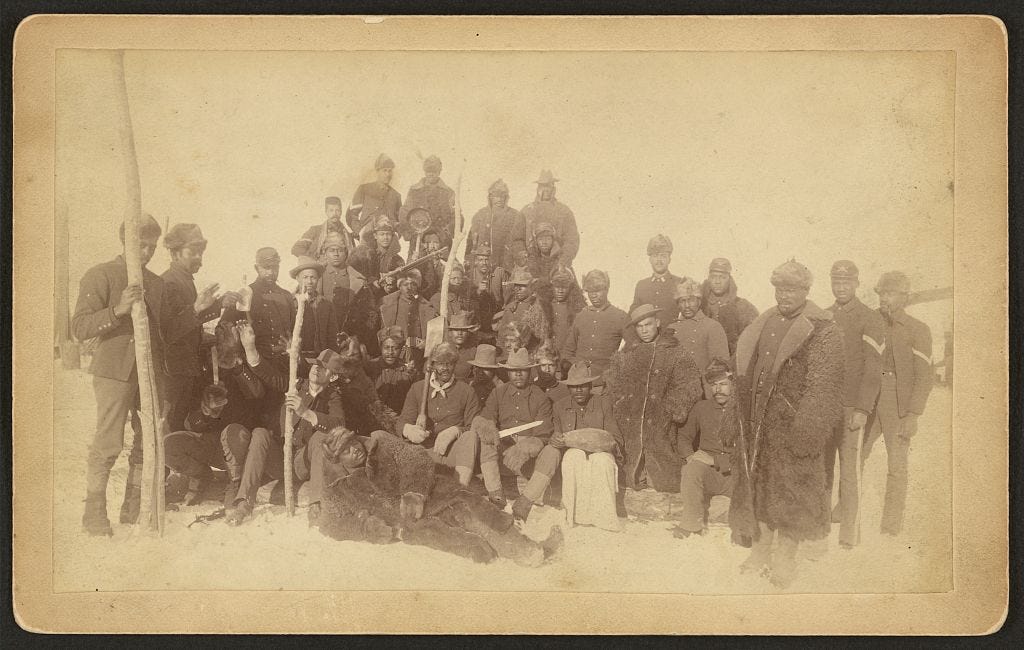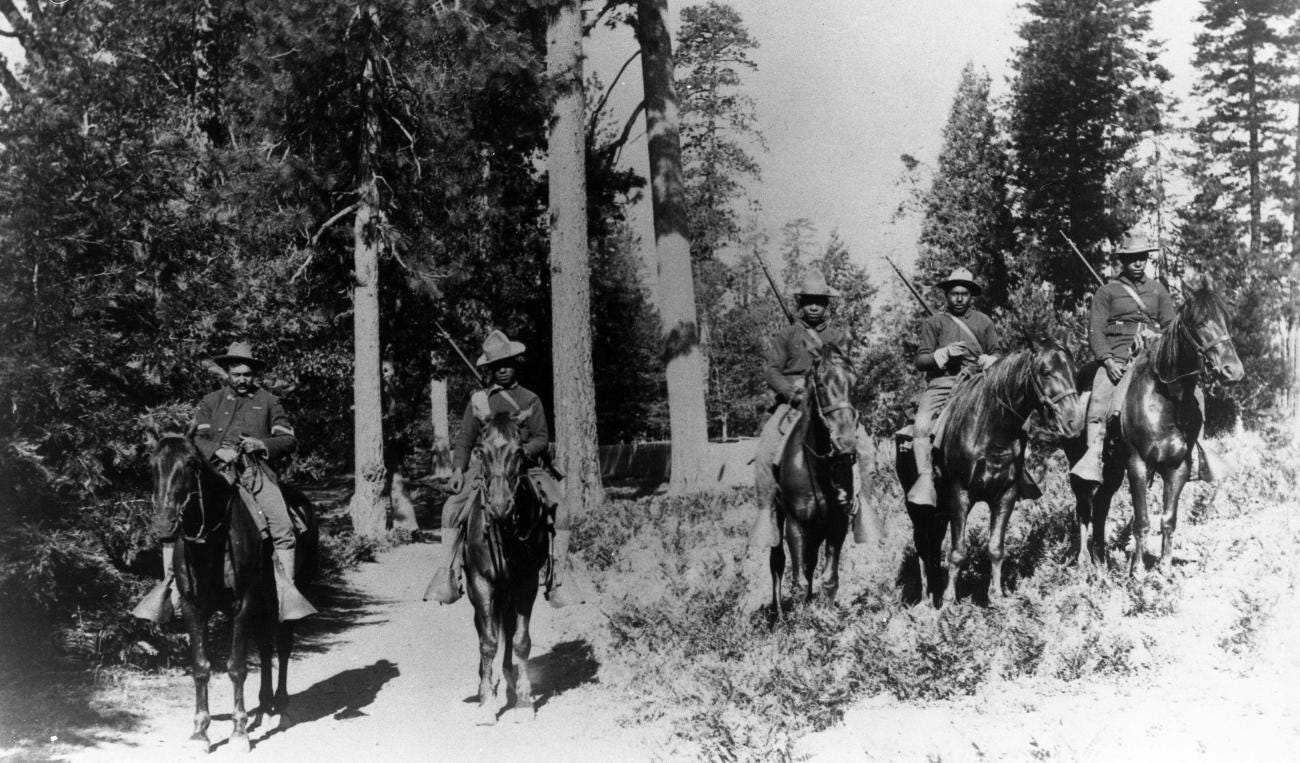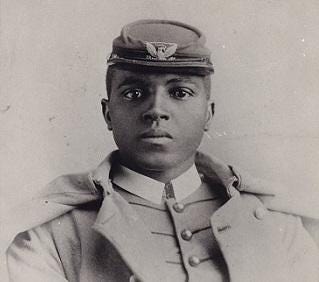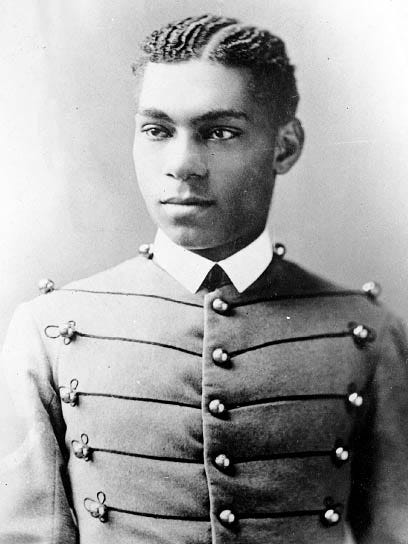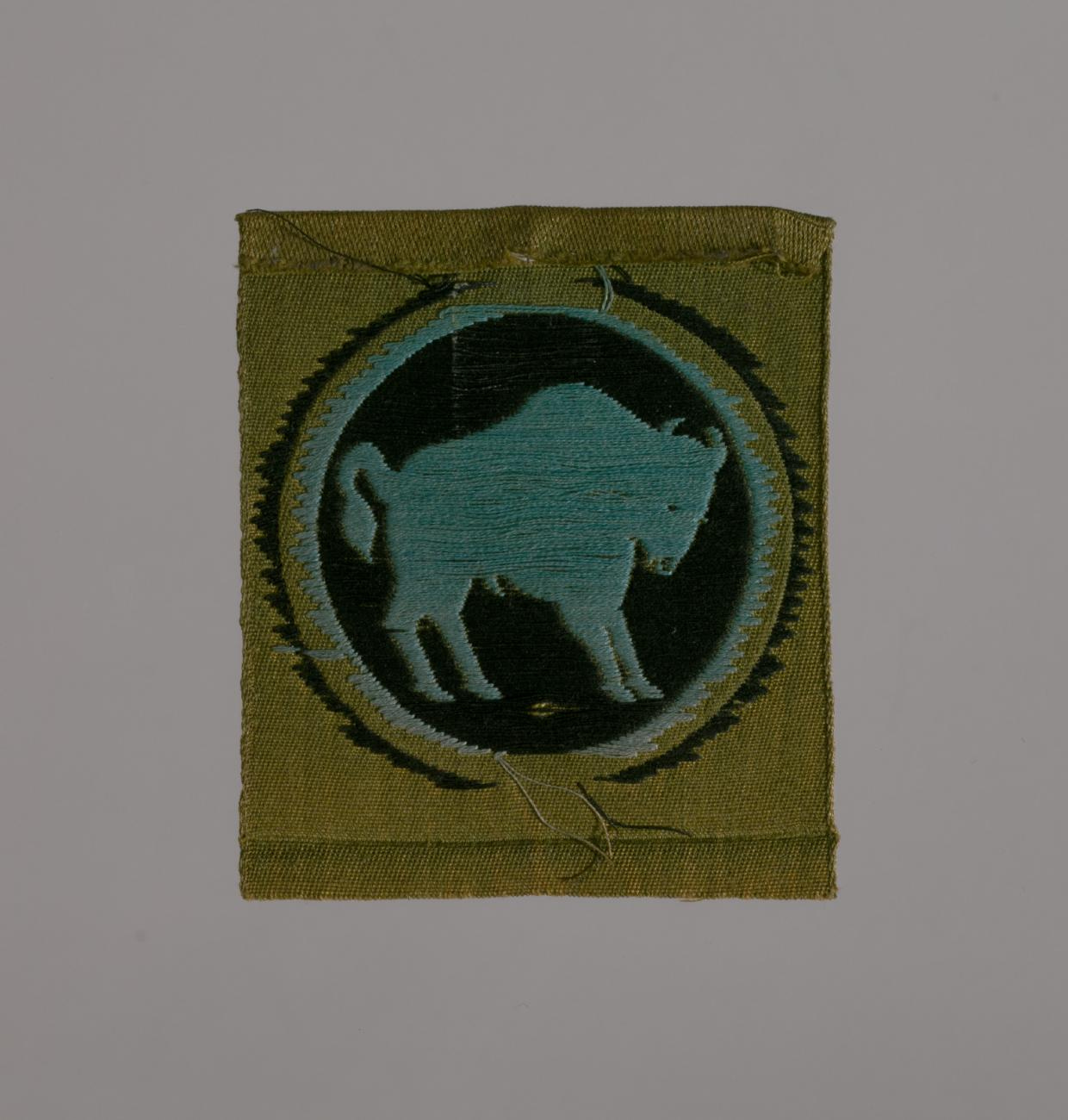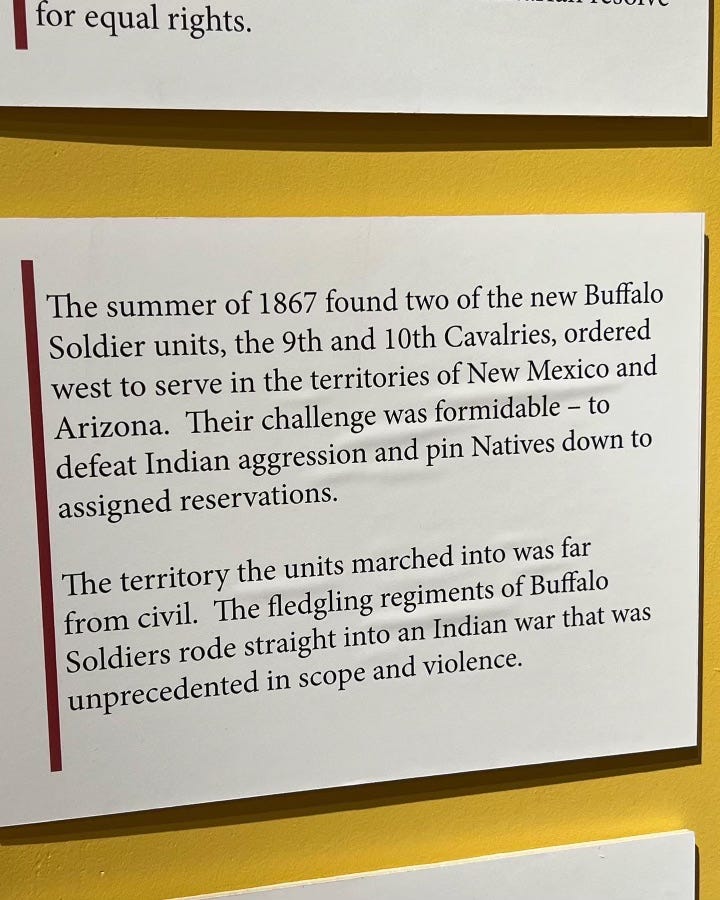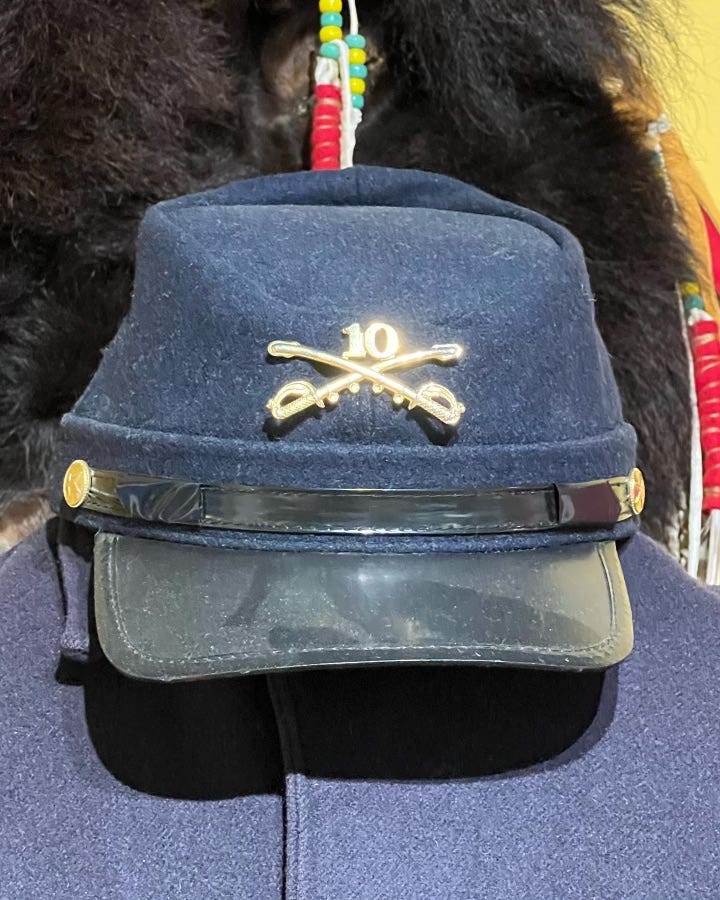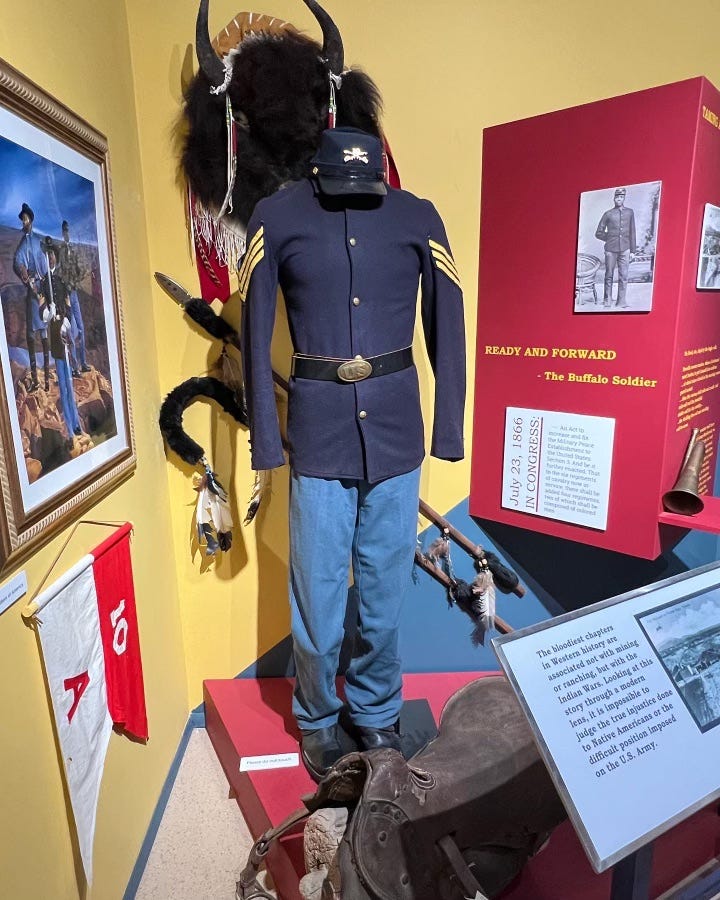True Facts about the Buffalo Soldiers
They were the precursors to the Harlem Hellfighters and contributed significantly to America in many areas
Issue #133 Friday Funday September 9, 2022
No ads or annoying popups ever! So instead, please see the important information at the bottom of this post. Please keep those “Likes” and comments coming! Thanks!
African Americans (men and women) have been a part of the military actions of the United States starting even before this country was a country. Most of us know about Crispus Attucks, an enslaved African with a native mother who freed himself, became a sailor, and then was the first colonist to die during the 1770 Boston Massacre, a precursor to the American Revolution.
The. History and Evolution of the Buffalo Soldiers
About one hundred years later, in 1866, Congress created six all-Black regiments that were later consolidated into four: the 9th and 10th Calvaries and the 24th and 25th Infantries, collectively known as the “Buffalo Soldiers.”
Most white officers, including George Armstrong Custer, refused to command Black regiments, indicative of the extreme racial prejudice from the Army that the Buffalo Soldiers faced. Additionally, African Americans were only allowed to serve west of the Mississippi River because many white people did not want armed Black soldiers in their towns and communities. Even then many of the Buffalo Soldiers suffered violent and often deadly encounters with white civilians.
These regiments were primarily led by white U.S. Army officers looking to move up the ranks, with the notable exceptions of three Black West Point graduates who achieved officer ranks and were put in charge of the Buffalo Soldiers: Henry O. Flipper, John Hanks Alexander, and Charles Young.
The Buffalo Soldiers were instrumental in protecting this country’s westward expansion, including (ironically), engaging in the U.S. government-led wars meant to wrest the Southwest and Great Plains territories from the Indigenous Nations.
Eighteen Buffalo Soldiers earned Medals of Honor between 1870 and 1890 while engaging in the wars against the Native nations.
The Buffalo Soldiers also helped to build roads and participated in the Battle of San Juan Hill during the Spanish American War in 1898. The Buffalo Soldiers were an integral part of the first national park rangers, where they worked against wildlife poaching and protecting other federal lands.
Achievements of the Buffalo Soldiers into the 20th Century
The Buffalo Soldiers were also recognized for their exceptional horsemanship. Black non-commissioned officers of the 9th Cavalry began training West Point Cadets in riding skills and tactics from 1907 until 1947.
They oversaw the construction of park infrastructure, including the first trail to the top of Mount Whitney –– the highest mountain in the contiguous United States–– and the first wagon road into Sequoia National Park's renowned Giant Forest.
Charles Young, the third African-American graduate of West Point, served as Acting Military Superintendent of Sequoia and General Grant National Parks, becoming the first African-American national park superintendent. During Young’s tenure, he named a Giant Sequoia for Booker T. Washington, and another Giant Sequoia was named in Young's honor in 2004.
Henry Ossian Flipper, born into slavery, was the first African American to graduate from the United States Military Academy at West Point, earning a commission to second lieutenant in the U.S. Army. Flipper was the first Black officer to command the 10th Calvary, one of the four regiments of the Buffalo Soldiers.
In 1882, Lt. Flipper was stripped of his commission following a smear campaign by white officers that resulted in a court martial. In 1999, President Bill Clinton posthumously pardoned Lt. Flipper and restored his medals and military standing with an honorable discharge and restoration of his commission.
After being dismissed from the military, Flipper became a civil engineer, an advisor to the Secretary of the Interior (the cabinet department that oversaw the indigenous peoples) Albert Fall in 1921, and then Flipper excelled as an engineer in the petroleum industry in Venezuela. He was also an author who wrote several books and papers about scientific and engineering topics.
The oldest living Buffalo Soldier, Mark Matthews, died on September 6, 2005, at the age of 111.
How the Buffalo Soldiers got their name
According to popular myth, the Buffalo Soldiers were so named by the native populations because of their tight dark curly hair (similar to the wool of the buffalos) or because they fought hard like the buffalo of the Great Plains. By the time of World War I, the newly formed all-Black 92nd Infantry Division (also known as the Harlem Hellfighters), several of whom were Buffalo Soldiers, formally adopted the buffalo as the symbol for its unit patch.
A recent “We Are Speaking” article about the Harlem Hellfighters
Photos from the Buffalo Soldier Museum by our friend, fellow writer/journalist, and “We Are Speaking” subscriber David E. Phillips. Thank you, David!
What did you know about the Buffalo Soldiers before this article? Let us know in the comments!
Help us to grow!
“We Are Speaking” is a reader-supported publication. To receive new posts and podcast episodes and to support our work, consider becoming a free or paid subscriber. We publish 7 days/week and 28+ issues/month. You. can upgrade your free subscription to the paid level. It costs monthly and annual paid subscribers less than 35¢ an issue. Thank you!
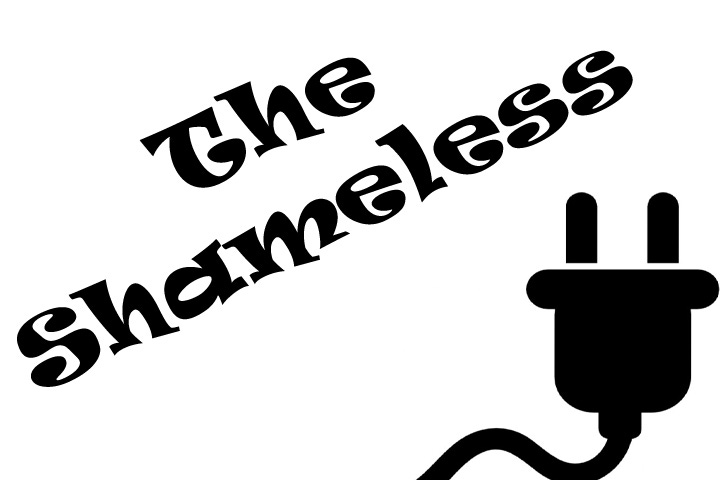
Thank you for checking out some of the books and businesses of the TeamOwens313 Global Creative Community:
Detroit Stories Quarterly (DSQ) Afro-futurism Magazine
The Mayonnaise Murders: a fantasy mystery novel by Keith A. Owens
The Global Creative Community Membership Site: Networking and MOnthly/Weekly Topics for Independent Writers and Creative and Solo Professionals
The Global Creative Community Brand and Marketing Academy: Training and Group Coaching for Independent Writers and Creative and Solo Professionals
Pam’s Branding and Marketing Articles for Independent Writers and Creative and Solo Professionals on LinkedIn
“We Are Speaking” is a reader-supported publication. To receive new posts and podcast episodes and to support our work, consider becoming a free or paid subscriber.




